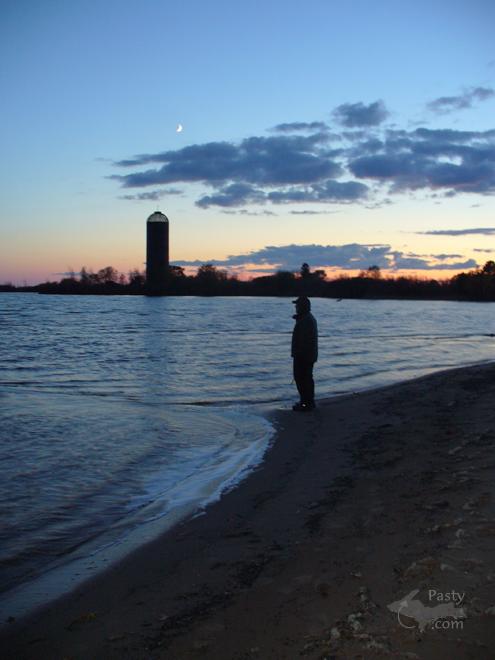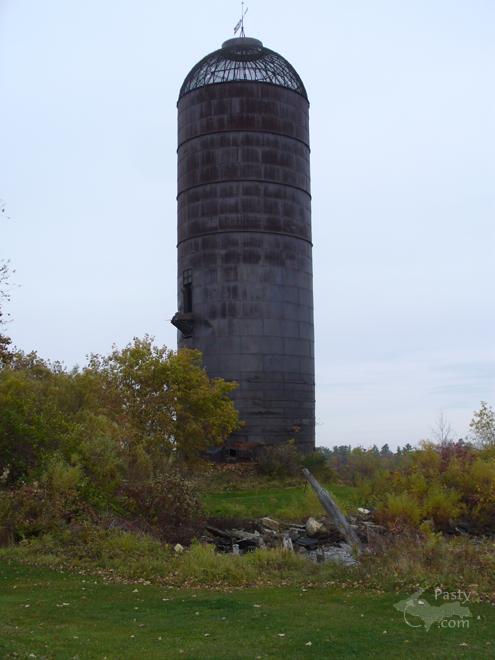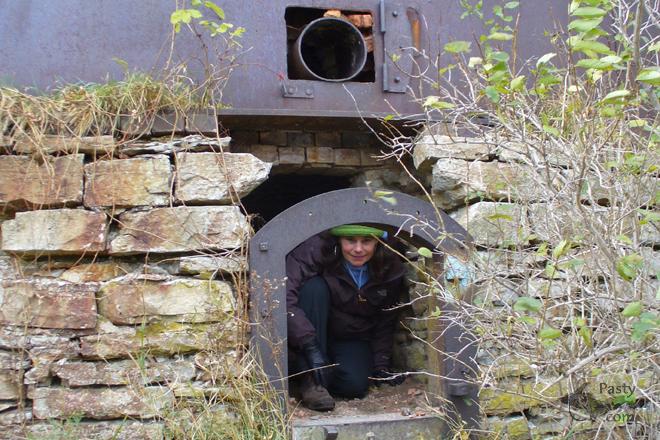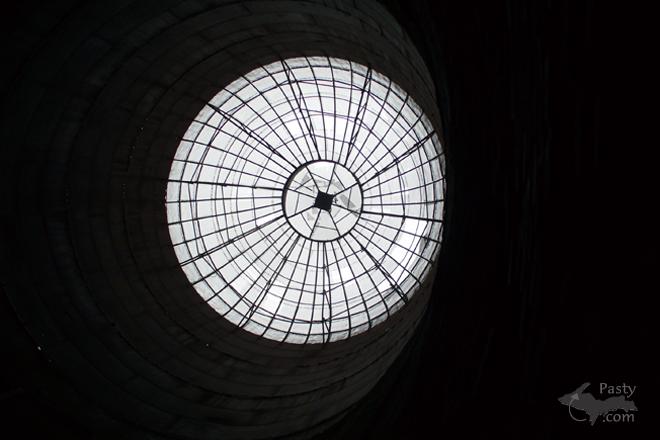By Mary Drew at Pasty Central (Mdrew) on Tuesday, November 8, 2011 - 07:48 am:
The little town of Nahma, was actually established by the Bay De Noquet Lumber Company, as a base for its lumbering operations. Brenda Leigh and her hubby, Jim, recently made a visit here and did some exploring of the lumber company waste burner, pictured in the distance in the sunset photo and then closer up, in the remaining photos.
The following information about the burner is taken from the U.S. Dept. of the Interior National Park Service document, found here: National Register of Historic Places Registration Form.
The Bay de Noquet Lumber Company Waste Burner is a cylindrical brick-lined iron structure about one hundred feet tall and thirty-two feet in diameter between the outer walls. Constructed between 1888 and 1893, the structure was built to burn bark and other waste products from the company's nearby sawmill. Standing on a limestone base, the burner is faced in plates supported by five broad horizontal metal bands or straps in the lower portion and four more horizontal cylindrical metal bands toward the top. Brick walls line the lower part of the interior. In the lower thirty feet the brick lining is one and one-half feet in thickness, in the twenty-four feet above that the lining is one brick or about eight inches in thickness. Above the fifty-four-foot level the burner has no lining. A hemispherical metal mesh screen, topped by a weather vane bearing the initials of the Bay de Noquet Company - B. De. N. Co. - caps the burner.
The Bay de Noquet Company structure is the last of the many of its late nineteenth century generation of wood waste burners associated with sawmill and wood products operations known to survive in Michigan. The burner is the only remnant left of the Bay de Noquet Company sawmill operation that gave rise to the company town of Nahma in the early 1880s and served as the village's economic mainstay until 1951, when the mills closed down.
Brenda crawled inside to get the last two photos and said that the air flow inside is incredible. Her last photo is quite interesting, somewhat of an optical illusion, looking like it could be a big eyeball and certainly doesn't look like it is an outward dome atop the burner structure. Thanks for taking us along on your exploration of this historic U.P. structure, Brenda!











